“This is the little corner of the world wherein I shall work out my destiny.”
N. C. Wyeth
A while back fellow Muddy Colors contributor, monster enthusiast, and cat wrangler, Justin Gerard, and I were talking about studios. He posed the question: what makes an ideal studio? In all the working set ups from all the years, what really mattered for quality of life and production?
Thinking through every place in the last 15 years that I’d sat at a desk to draw, it hit me; you know what, this is a much tougher question you might think! Was it windows and light? A sprawling space or a cozy nook? Desks and books? House plants? A whole bunch of wild animals? I felt like I could rank the places I’d called “home base” over the years but I struggled to put my finger on what exactly made a place work. The functional layout is important, of course, but how does the place feel? In my mind I kept circling back to the intangible elements that make a place feel right.
As it happens, I’m in the midst of planning a studio move myself and it’s got me, once again, considering just what makes a studio a studio.
For a little inspiration to help illuminate the answer (and to dream about what might be) I’ve been researching a handful of studios from artists I admire. There are countless contemporaries with beautiful workspaces, of course, but partially to satisfy my own curiosity and partially to glean specific ideas, I’ve been focused on illustrators from the last couple hundred years.
In some instances information or a photo is hard to come by but at the very least getting a glimpse into a workspace in any capacity is informative.
N. C. Wyeth
The gold standard for studios? The gold standard for massive, north facing windows, certainly. I got the chance to visit this incredible place a number of years ago. Coupled with the Brandywine museum, touring this studio this was a delirious experience.
Today, it’s been preserved exactly as it was in Wyeth’s time. It’s a powerful and awe inspiring space (especially if you like massive, north facing windows). More information and a video tour can be found at the Brandywine.
Sir John Everett Millais
If you were wondering just what feature caught my attention in the studio of former child-prodigy and founding member of the Pre-Raphaelite Brotherhood, why it’s the fireplace. I enjoy the paneling, various artifacts, and what must be a spacious light filled workspace but that fireplace steals the show.
Few things I like better than arranging kindling on a dreary day and getting to work. And with a fireplace like that I expect Millais might say the same.
And here you can get a better look at the scale of the place.
John Bauer
An utterly inescapable influence on just about every contemporary artist that I admire. If you want to draw trolls and creatures, you must contend with John Bauer. He casts the most haunting and beautiful shadow.
Now, I’ve gone through all my books and while he was an avid photographer, the only photo in which you can get a sense of a workspace is the above image.
Prior to his tragic death at sea, Bauer, his wife, and their young son were moving to Stockholm to begin construction on a new house and studio.
Trina Schart Hyman
If you’re searching for a sense of the way an artist’s studio feels, you could hardly do better than having them translate that feeling through themselves and on to paper.
Animals creeping around, shelves full of little treasures, a tree growing through… something? Absolutely. Sign me up. I find this vision of the ideal workspace to be perfectly resonant.
Maurice Sendak
A place that strikes me as quiet and introspective, it seems fitting that in his will Maurice Sendak wanted his studio to become “a museum or similar facility, to be used by scholars, students, artists, illustrators and writers, and to be opened to the general public.”
I’d like to see that red cardigan someday.
Honorable Mention: Fonthill Castle
I freely admit, I hadn’t heard of Henry Chapman Mercer until I got to poking around on Historic Artists’ Homes & Studios.
What must surely be largest repository of its kind, a place dedicated to chronicling living and working spaces of artists across a wide array of disciplines. If you’re looking to find inspiration for your own working space or you’re curious about just where was Winslow Homer’s studio (surprise, it was on coast) this is quite a resource.
According to the site, Mercer was an “archaeologist, anthropologist, ceramist, scholar and antiquarian” and evidently built this castle to showcase his collection of tiles and prints.
And now we end where we began: with some truly impressive windows.
From the vaulted heights of Wyeth’s grand gallery to the intimate studios of Sendak and Hyman, I think it’s fair to say that any space is going to be a reflection, at least in part, of the particular artist.
Ideally, you can suit it to your temperament and needs so by extension it’s going be a little like a thumbprint. But a workspace doesn’t make the art, of course, you do.
For all the dreams about the ideal studio and what makes it so, what really matters is that you carve out a place, any place, to bring the work to life.


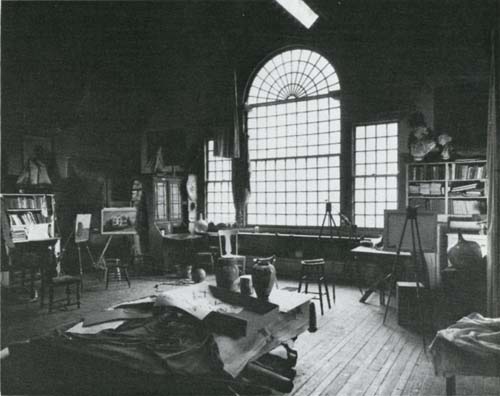
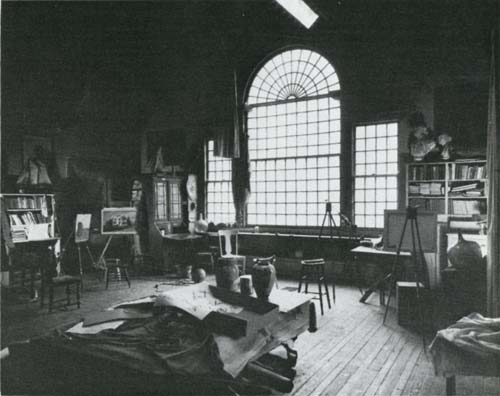
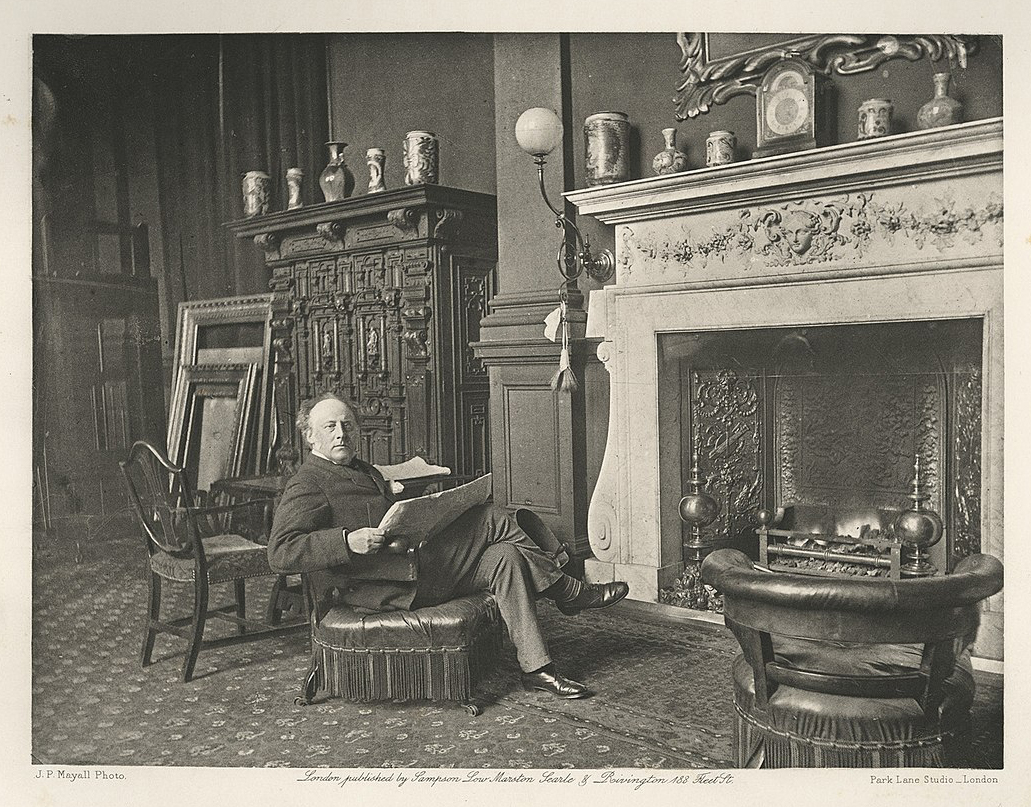

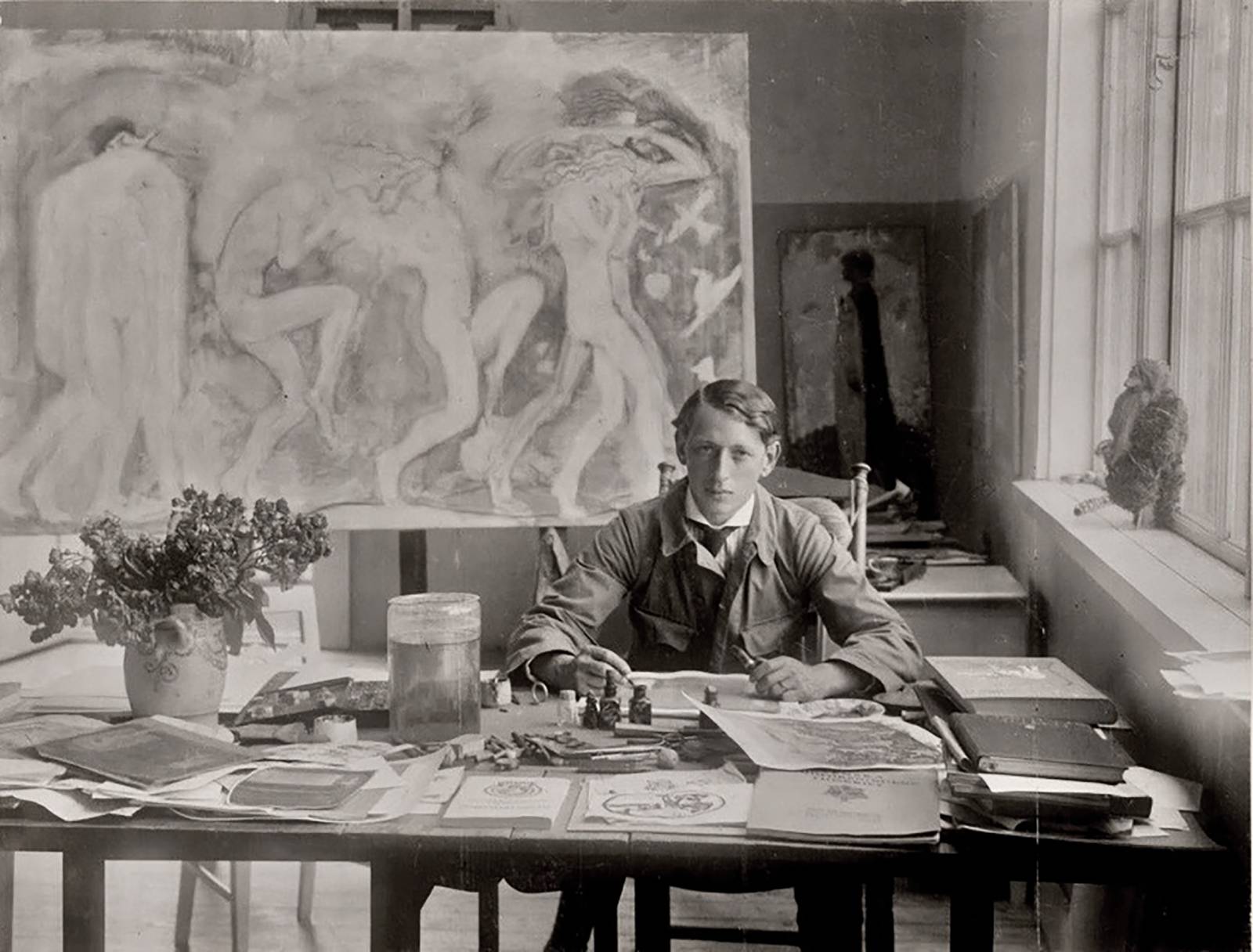
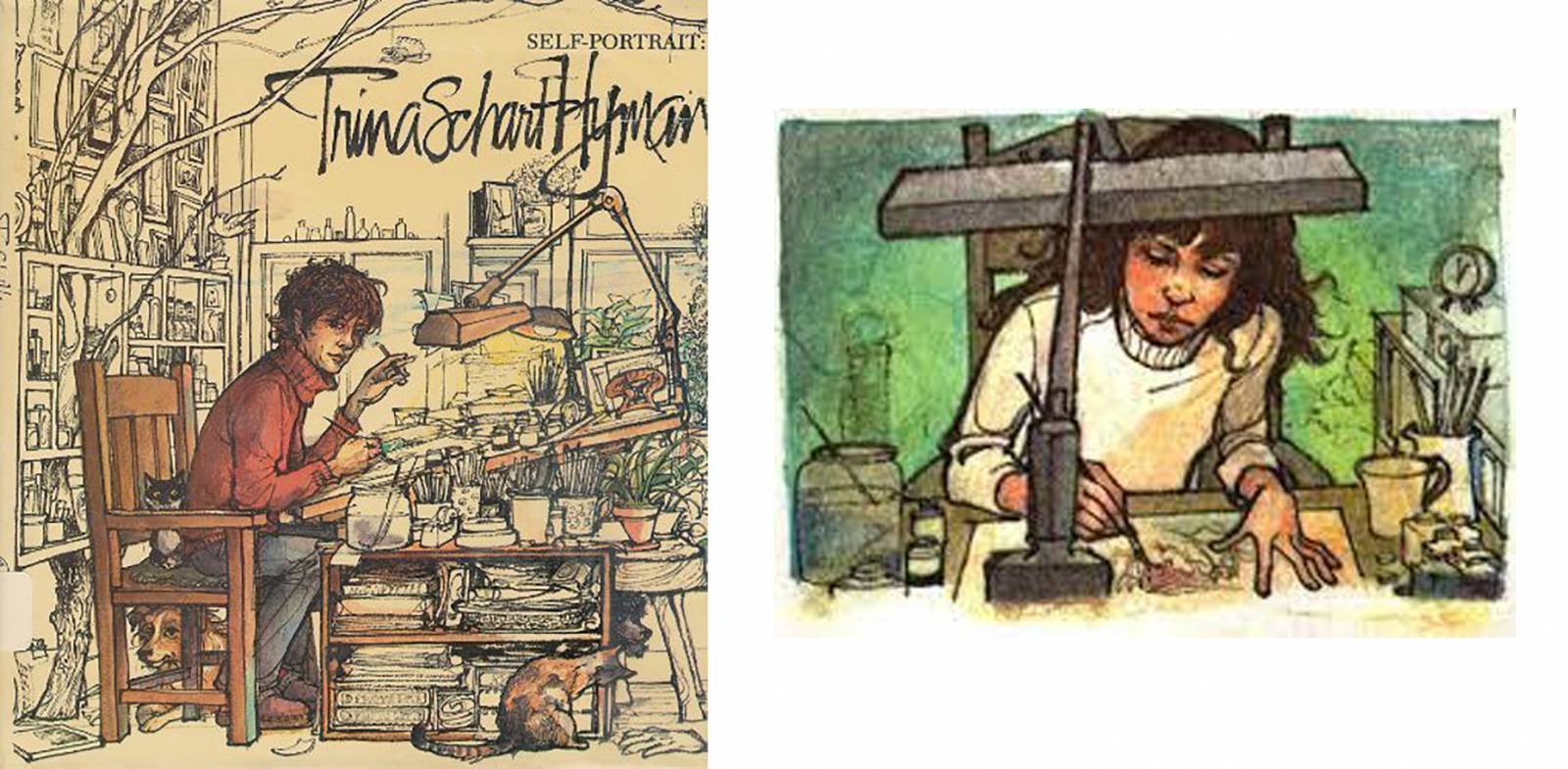

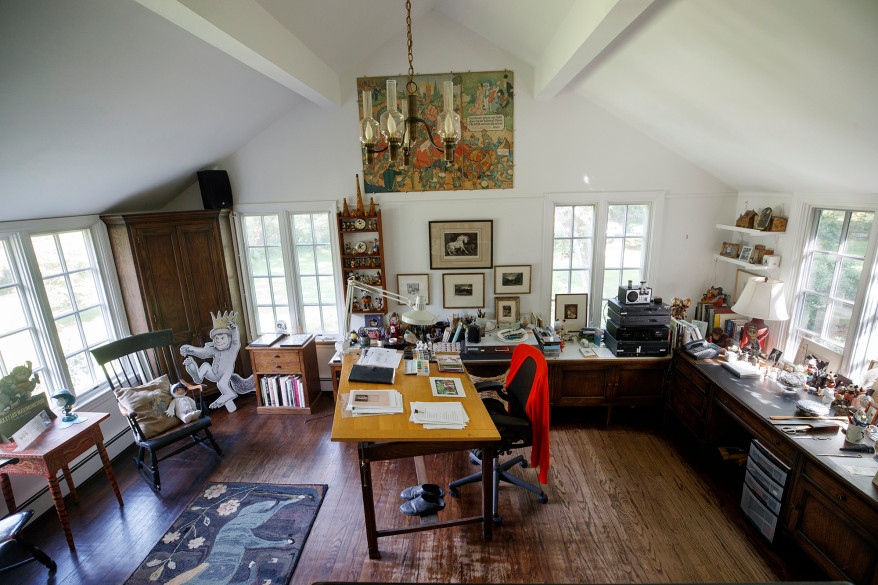
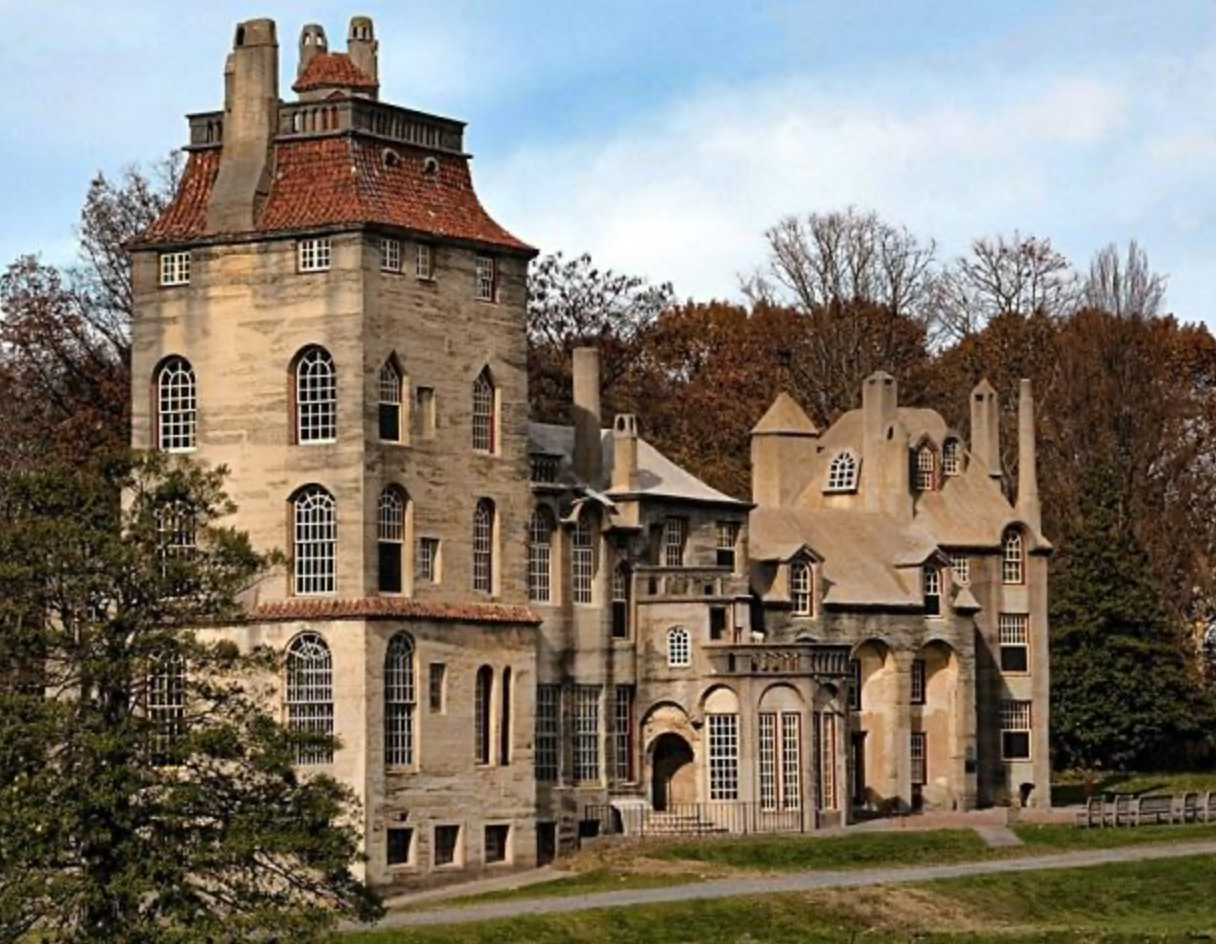


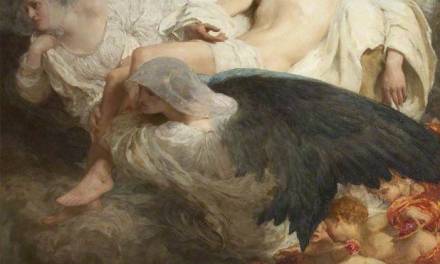


Wow, some gorgeous studios there . . .
This looks very fabulous. Thanks.
This article truly resonates. It’s so easy to get caught up in the ‘perfect’ studio fantasy, but you’re absolutely right – the space reflects the artist, not the other way around. It’s about carving out any place to create, which is a powerful reminder.
As someone who’s worked in various ‘less-than-ideal’ spaces, this is so real. You adapt and make it work. It’s comforting to know that even renowned artists thought deeply about their environments. The part about the space being a ‘thumbprint’ of the artist really hit home.
This article truly resonates. It’s so easy to get caught up in the ‘perfect’ studio setup, but you’re right – the magic isn’t in the walls, it’s in the artist’s drive to create, wherever they are. It made me rethink my own workspace desires.
You should check out Frederick Leighton’s studio as well. I’d put it up there with Wyeth’s studio, and Leighton’s house was definitely more impressive. I’m going to Madrid soon and plan to see Sorolla’s studio, too.